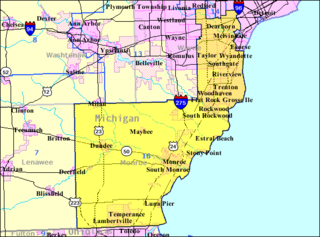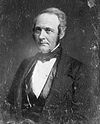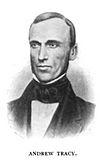Ohio's at-large congressional district existed from 1803 to 1813, from 1913 to 1915, from 1933 to 1953 and from 1963 until 1967, when it was banned by the Voting Rights Act of 1965.
These are tables of congressional delegations from Vermont to the United States Senate and United States House of Representatives.

North Dakota's at-large congressional district is the sole congressional district for the state of North Dakota. Based on size, it is the eighth largest congressional district in the nation.

Vermont has been represented in the United States House of Representatives by a single at-large congressional district since the 1930 census, when the state lost its second seat, obsoleting its 1st and 2nd congressional districts. There were once six districts in Vermont, all of which were eliminated after various censuses.
Vermont's 1st congressional district is an obsolete district. Vermont currently has one representative to the United States House of Representatives, elected statewide at-large. Until 1933, however, the state used to have multiple seats spread out into geographic districts. During that time, the first district elected its own representative.
North Dakota's 1st congressional district is an obsolete congressional district in the state of North Dakota that existed from 1913 to 1933, and from 1963 to 1973.
New Jersey's 14th congressional district in the House of Representatives was eliminated after the 1990 census. As a result of the congressional apportionment performed after this census, New Jersey lost one seat and was reduced to thirteen seats in the House of Representatives.
After the 1880 census, a tenth seat in the United States House of Representatives was added to Virginia's nine districts. For the 48th Congress, that seat was elected at-large statewide. In 1885, Virginia redistricted its seats into ten geographic districts, thereby eliminating the at-large seat.

Michigan's 15th congressional district is an obsolete congressional district in the state of Michigan.
Michigan's at-large congressional district may refer to a few different occasions when a statewide at-large district was used for elections to the United States House of Representatives from Michigan.

Michigan's 16th congressional district is an obsolete United States congressional district in Michigan. It covered the communities of Dearborn, Downriver and Monroe County.
Michigan's 17th congressional district is an obsolete United States congressional district in Michigan. The first Representative to Congress elected from the 17th district, George Anthony Dondero, took office in 1933, after reapportionment due to the 1930 census. The district was dissolved following the 1990 census. The last Representative elected from the district, Sander M. Levin, was subsequently elected from the 12th district.
The State of Colorado was represented in the United States House of Representatives by one member of the House, elected at-large from 1876 until 1893 and from 1903 until 1913, and by two members at-large from 1913 until 1915. Since the 1914 elections, all members from Colorado have been elected from congressional districts.
On three occasions in New York history, some members of the United States House of Representatives were elected statewide at-large. This was due to an increase of the number of representatives after the previous federal census, and the failure of the State Legislature to re-apportion the congressional districts in time for the next election.
Alabama's at-large congressional district was a congressional district for the United States House of Representatives in Alabama active at various times from 1819 to 1965. Alabama became a state in 1819, and its single representative to the 16th and 17th Congresses was elected at-large. For the 27th Congress, all five of Alabama's representatives were elected at-large, before the state gained a representative from the 1840 census. In the 43rd to 44th Congresses, the seventh and eighth representatives gained in the 1870 census were elected at-large. For the 63rd and 64th Congresses, Alabama elected the tenth of its apportioned representatives, gained in the 1910 census, at-large from the entire state. For the 88th Congress, after the state lost one representative in the 1960 census, Alabama once again elected all of their representatives at-large.
From statehood in 1867 until 1883, Nebraska had only one congressional district. Its representative was elected at-large statewide.
Vermont's 5th congressional district is an obsolete district. It was created in 1821. It was eliminated after the 1840 census. Its last congressman was John Mattocks.
Vermont's 6th congressional district is an obsolete district.
Wisconsin's 10th congressional district is a former congressional district of the United States House of Representatives in Wisconsin. It was created following the 1890 Census, and was abolished after the 1970 Census.
Wisconsin's 11th congressional district is a former congressional district of the United States House of Representatives in Wisconsin. It was created following the 1900 Census, and was disbanded after the 1930 Census. The district covered the far northern part of the state during its time of existence. All Representatives who were ever elected to the seat were members of the Republican Party.


















